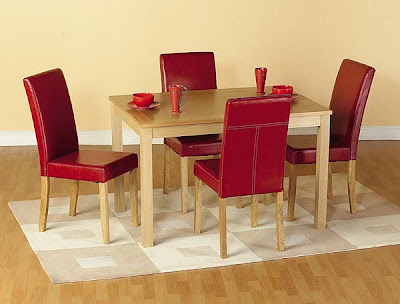
Leather furniture looks great in any room, but what type should you go for and how can you look after it? Our buyer’s guide gives you the lowdown on this popular, luxurious material.
Types of leather
The reason all leather looks different is simply because it is. There are two main types of upholstery leather: full-aniline and semi-aniline. The most expensive is full-aniline. It’s the most natural leather and has a soft feel to it. The leather is dyed in a vat to the required colour but isn’t given a top coating, so it breathes more easily. However, this makes it prone to staining as it absorbs liquid easier. Semi-aniline leathers are dyed, then a fine layer of top coating is applied to protect it, making semi-aniline more practical for most homes.
Faux leather
Faux leather furniture is becoming increasingly popular as it’s cheaper than the real thing but achieves the same warm, luxurious look. Unlike real leather, it won’t act the same way in different temperatures and it may damage more easily as it is usually made of a thinner fabric.
Coloured leather
Leather furniture and accessories don’t just have to be brown, black and cream. Suppliers are now offering leather sofas and other furniture in an increasingly wide range of colours – red and white are proving popular options, and look superb in a contemporary scheme. Why not continue the theme with coordinating coloured leather (or faux-leather) storage boxes?
Beds
Leather beds are becoming ever more popular, and as such are easier than ever to come by. Leather beds are available in a variety of styles and finishes from the ultra modern to the traditional, and the luxurious nature of the material means it will be cool to the touch in summer and warm in winter.
Dining chairs
While we only used to see leather armchairs, the material is now widely used in dining chairs, too. A major benefit of leather dining chairs is that they wipe clean and complement a wide range of tables. They’re also very robust and, unlike their fabric counterparts, look better with age.
Sofas
Whether you opt for a classic British Chesterfield or a sleek, ultra-modern Italian design, a leather sofa is a great addition to any style of living room. Leather sofas are hard wearing and, depending on the type of leather you opt for, are less prone to staining than conventionally upholstered sofas. And, if you look after it properly it could last you a lifetime.
Top tips for leather care
Buy specific leather furniture care products, and don’t assume that the polish and waxes you use on shoes or handbags can be used on furniture, too.
Keep leather furniture away from direct sunlight and heat – especially avoid placing a leather sofa against a radiator that is in use.
To keep your leather soft and supple, invest in a softening cream. Simply apply it with a cloth and, after 30 minutes, buff the leather to a soft sheen to prevent cracking.
Click here to subscribe to Real Homes magazine and have expert advice delivered to your door every month!
Furniture123 - buying leather furniture made easy! Pin It Now!


